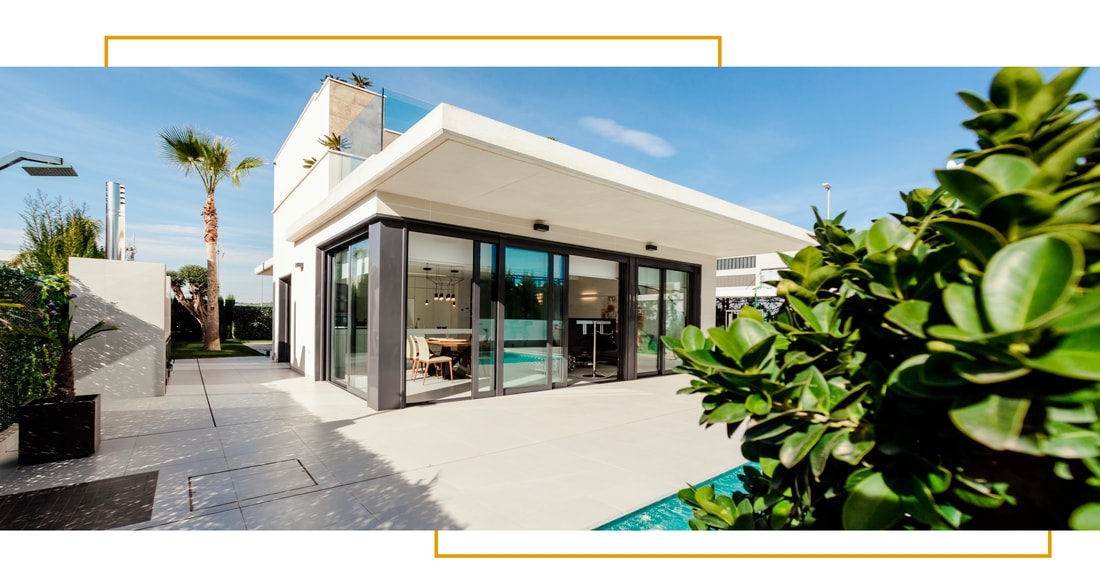|
Have you considered a property that can do both? The six-year property capital gains tax exemption rule might just be the key to making your purchase a hybrid property. As a Buyer’s Agent, I am always engaged in conversations regarding property selection and am often asked, “Should I first buy an investment property or a Principal Place of Residence?” Rent-vesting (buying a property in an area you don’t want to live while renting somewhere that fits your lifestyle – often done using the investment property model) is usually part of this conversation and often comes up as people feel they won’t be able to find a property in an area that meets their budget while also fitting their lifestyle and taste. (An assumption we often prove wrong as an experienced Real Estate Buyers Agent)
The Property Capital Gains Tax “six-year rule” allows someone entering the property market to consider a third option when selecting a property. The “six-year rule” allows for your Principal Place of Residence to be rented out for income for up to six years and still remain, from a taxation and capital gain perspective, as a principal place of residence rather than an investment property. This type of hybrid offers substantial capital gains tax advantages over purely buying an investment property, while providing the ideal asset to perform improvement and add value, the essential ingredients in achieving capital growth above market and enabling you to climb the property ladder. In previous newsletters, we covered Mastering the One/Two/ Three of Sydney Property ownership, making sure your next home is Investment Grade, and the benefits of using the Bank of Mum and Dad (all available on the MCS Buyers website blog page). Using this knowledge base, you now need to focus on which structure works best for you, Investment Property or Principal Place of Residence. A Principal Place of residence offers the opportunity to move to a hybrid investment property for a period of time which may be taken advantage of if you find yourself transferred overseas or interstate for career advancement or just simply wanting to live in a rental property somewhere closer to your lifestyle goals. It also can act as a safety mechanism if you find yourself unemployed, experiencing a slow property market or just wanting to take a break. First, it is important to understand the guidelines, procedures, and limitations of this type of dual-use property. Make sure you understand the Tax rule first before considering property options. The Property Capital Gains Tax “Six-Year Rule” It is important to understand capital gains tax (CGT) consequences before you decide on an Investment Property versus Principal Place of Residence. Before making any decisions on the type of property purchase, it is essential to discuss the Property Capital Gains Tax rules and implications with a registered accountant to ensure the type of property investment works for you. Principal Place of Residence (PPOR) Before delving into the property capital gains tax “six-year rule,” it’s important to understand what constitutes a principal place of residence. As a general rule, the main residence exemption alleviates capital gains tax payable on the sale of the property you regard as your family home, which is known as your Principal Place of Residence (PPOR). This is because you don’t generate an income from living in your own home. There are a few criteria that need to be met for your home to be considered your PPOR. These include, but are not limited to:
The Property Capital Gains Tax Six-Year Rule? The property capital gains tax “six-year rule” allows you to continue to view your home as your principal place of residence for up to six years while renting it out. This means that you would be able to sell the property within the six-year period and be exempt from paying capital gains tax just as you would if you sold the house after residing there yourself for the six-year period. The six-year absence rule exists because there are many reasons why you may not be living in your property for some time. The Australian Tax Office recognises that there are various unique circumstances beyond the control of the property owner. The Property capital gains tax “six-year absence rule” will also appeal to homeowners wanting to make some additional money for the period that they are not able to reside in their home, without prompting the need to pay CGT upon its eventual sale. There are, of course, conditions that you need to be aware of that come with using the Property capital gains tax “six-year rule”:
What If You Are Away From Your PPOR More Than Once? Each period that you do not reside in your PPOR and it’s rented out is handled as an individual case. This means that the Property capital gains tax “six-year rule” restarts each time you move back into the home. Provided that each interim period you are away does not surpass the six years, then you can avoid paying the capital gains tax. Currently, there is no fixed constraint on the number of times you can make use of this exemption. The “six-year rule” can be viewed as a flexibility mechanism which can allow you to pause your property ownership journey while creating income and covering ownership expenses without the need of switching out to a purely investment property model in which Capital Gains tax at the time of sale will become applicable. In summary: Unsure whether to buy a Principal Place of Residence or an Investment Property? Consider a hybrid approach with the six-year property capital gains tax exemption rule. This rule allows you to rent out your PPOR for up to six years while still maintaining its tax advantages. Understand the guidelines and limitations, and seek professional advice to determine the best option for your circumstances. If nothing else, the “six-year rule” should create confidence that a Principal Place of Residence can offer flexibility and capital gains tax advantages not available in a pure investment property purchase. This flexibility can underpin your journey up the property ladder allowing for unexpected career and life events to be absorbed into the journey without derailing the progress. Strategic property selection is by far the most important element in successfully navigating the property ladder in the Sydney property market. The actual property you buy sets the foundation for what you can achieve in capital growth. Please reach out to us at MCS Buyers for an obligation-free chat to learn more about our market experience and buying services. The type of property you purchase is by far the most critical element in climbing the property ladder, and at MCS Buyers, we bring market experience and expertise to ensure you acquire a quality asset and untapped potential. Strategic property selection is crucial for success in the Sydney market. Contact MCS Buyers for expert guidance on acquiring a quality asset. Important Note: The above article is not intended as financial advice and serves as an example of a strategy practiced by clients we work for in securing quality property in the Sydney Real Estate market. It is strongly advised that anyone looking to buy property should first seek professional financial advice from a licensed accountant, financial planner, and mortgage broker to review their individual financial circumstances and abilities.
0 Comments
Leave a Reply. |
AuthorMalcolm Middleton. Principal - MCS Real Estate Buyers Advocate/ Sale Assist, Property Expert, Entrepreneur, Property Development Archives
May 2024
Categories |
|
Follow Us
|
Disclaimer - Privacy and Commercial ethics
|
About Us
Middleton Curtis Spencer, Expert Real Estate Buyers in Sydney specialising in the following suburbs: Killara, Gordon, Pymble, Turramurra, Wahroonga, Warrawee, St Ives, Hornsby, Waitara, Artarmon, Lane Cove, Chatswood, Willoughby, Castlecrag, Middle Cove, Castle Cove, Roseville, Lindfield, Mosman, Cremorne, Neutral Bay, McMahons Point, Waverton, Wollstonecraft, Greenwich, Woolwich, Riverview, Longueville, Cammeray, Crows Nest, Naremburn, Northbridge, Frenchs Forest, Forestville, Killarney Heights, Beacon Hill, Belrose, Allambie Heights, Davidson, Manly, Seaforth, Balgowlah, Fairlight, Manly Vale, Harbord, Queenscliff, Curl Curl, Dee Why, Freshwater Beach, Long Reef, Collaroy, Narrabeen, Elanora Heights, Warriewood, Mona Vale, Bungan, Bilgola, Avalon, Newport, Church Point, Bayview, Clareville, Whale Beach, Palm Beach, Darling Point, Watsons Bay, Woollahra, Rose Bay, Double Bay, Centennial Park, Paddington, Elizabeth Bay, Potts Point, Wooloomooloo, Surry Hills, Arncliffe, Banksia, Brighton Le Sands, Cook Park, Dolls Point, Ramsgate, Sandringham, Sans Souci.
|
All Rights reserved copyright 2016. Middleton Curtis Spencer NSW Corporate Licence no. 10047784



